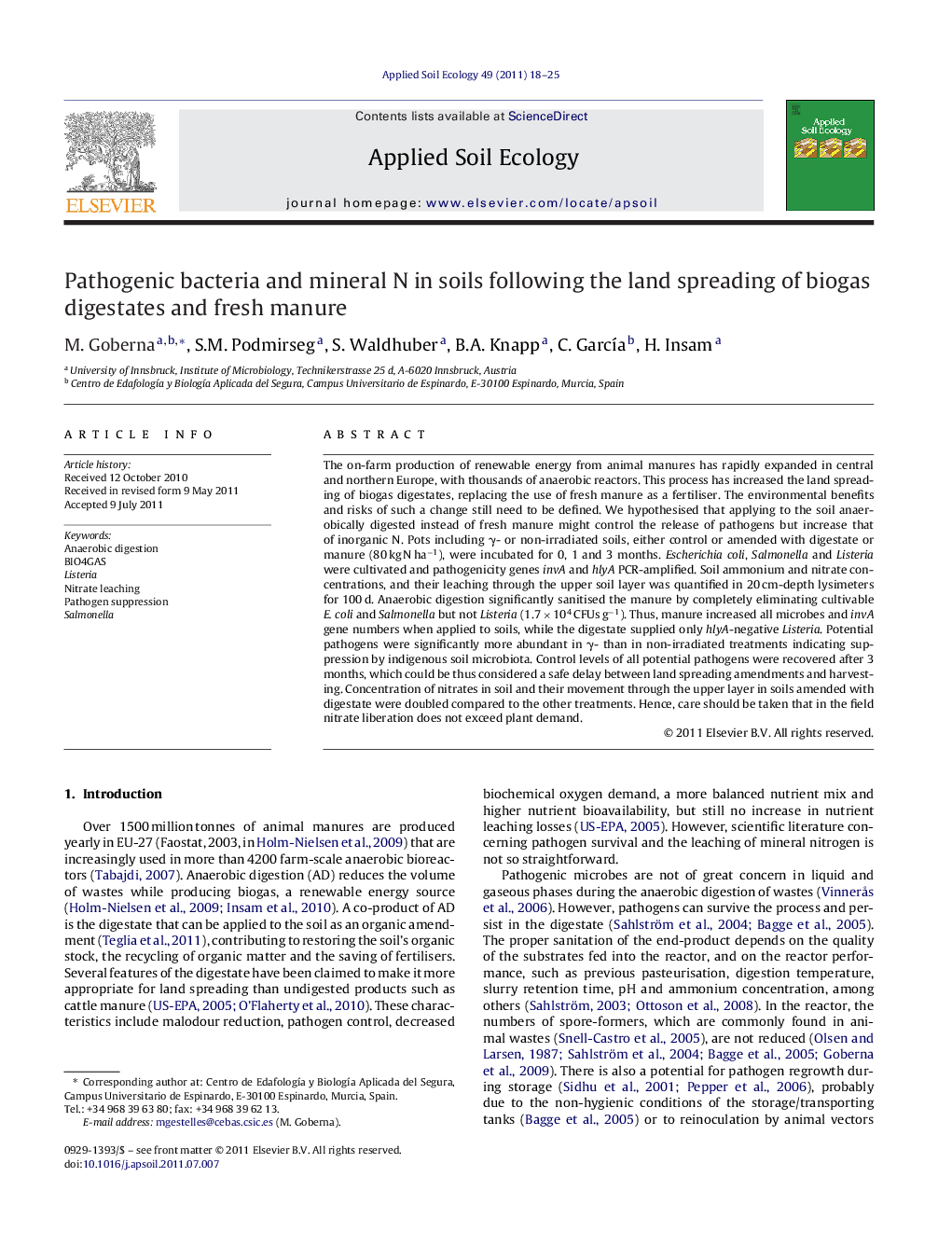| کد مقاله | کد نشریه | سال انتشار | مقاله انگلیسی | نسخه تمام متن |
|---|---|---|---|---|
| 4382692 | 1617834 | 2011 | 8 صفحه PDF | دانلود رایگان |

The on-farm production of renewable energy from animal manures has rapidly expanded in central and northern Europe, with thousands of anaerobic reactors. This process has increased the land spreading of biogas digestates, replacing the use of fresh manure as a fertiliser. The environmental benefits and risks of such a change still need to be defined. We hypothesised that applying to the soil anaerobically digested instead of fresh manure might control the release of pathogens but increase that of inorganic N. Pots including γ- or non-irradiated soils, either control or amended with digestate or manure (80 kg N ha−1), were incubated for 0, 1 and 3 months. Escherichia coli, Salmonella and Listeria were cultivated and pathogenicity genes invA and hlyA PCR-amplified. Soil ammonium and nitrate concentrations, and their leaching through the upper soil layer was quantified in 20 cm-depth lysimeters for 100 d. Anaerobic digestion significantly sanitised the manure by completely eliminating cultivable E. coli and Salmonella but not Listeria (1.7 × 104 CFUs g−1). Thus, manure increased all microbes and invA gene numbers when applied to soils, while the digestate supplied only hlyA-negative Listeria. Potential pathogens were significantly more abundant in γ- than in non-irradiated treatments indicating suppression by indigenous soil microbiota. Control levels of all potential pathogens were recovered after 3 months, which could be thus considered a safe delay between land spreading amendments and harvesting. Concentration of nitrates in soil and their movement through the upper layer in soils amended with digestate were doubled compared to the other treatments. Hence, care should be taken that in the field nitrate liberation does not exceed plant demand.
► Amending soils with anaerobically digested instead of fresh manure released significantly less potential pathogens (E. coli, Salmonella and Listeria) to the environment, as shown by the numbers of CFUs and pathogenicity genes invA and hlyA.
► The indigenous soil microbiota suppressed allochthonous pathogens and control levels were recovered in 90 days.
► Vertical leaching of nitrates through the topsoil layer after application of digestate doubled that of soils amended with manure for a cumulative period of 100 days. Field nitrate application needs to match plant demand or digestate treatment should be considered.
Journal: Applied Soil Ecology - Volume 49, September 2011, Pages 18–25